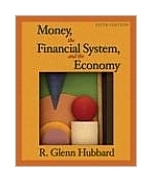|
||
• wydawnictwa polskie
• Zamów informacje o nowościach z wybranego tematu • kontakt
• Cookies na stronie |
MONEY,THE FINANCIAL SYSTEM AND THE ECONOMYHUBBARD G.wydawnictwo: ADDISON-WESLEY , rok wydania 2004, wydanie Vcena netto: Money, the Financial System, and the Economy plus MyEconLab Student Access Kit, 5/E R. Glenn Hubbard, Columbia University Description Hubbard builds his text upon the idea that students must develop an economic understanding for organizing concepts and facts, evaluate current and historical events using economic analysis, and use economic principles and tools to predict future outcomes and changes in the economic system. Hubbard's modern approach employs economic principles to illustrate the evolution and conduct of financial markets and institutions, drawing a full picture of the relationship between economic performance and the international developments within these markets and institutions. The Fifth Edition provides a timely perspective on key issues-corporate accounting scandals, development in the international financial system, the post 911 recession, and more-using relevant new data and up-to-the-minute real-world applications, while presenting it all in a clear, concise style. Table of Contents I. INTRODUCTION. 1. Introducing Money and the Financial System. 2. Money and the Payments System. 3. Overview and the Financial System. II. INTEREST RATES. 4. Interest Rates and Rates of Return. 5. The Theory of Portfolio Allocation. 6. Determining Market Interest Rates. 7. Risk Structure and Term Structure of Interest Rates. III. FINANCIAL MARKETS. 8. The Foreign Exchange Market and Exchange Rates. 9. Derivative Securities and Derivative Markets. 10. Information and Financial Market Efficiency. 11. Reducing Transactions Costs and Information Costs. IV. FINANCIAL INSTITUTIONS. 12. What Financial Institutions Do. 13. The Business of Banking. 14. The Banking Industry. 15. Banking Regulation: Crisis and Response. 16. Banking in the International Economy. V. THE MONEY SUPPLY PROCESS AND MONETARY POLICY. 17. The Money Supply Process. 18. Changes in the Monetary Base. 19. Organization of Central Banks. 20. Monetary Policy Tools. 21. The Conduct of Monetary Policy. 22. The International Financial System and Monetary Policy. VI. THE FINANCIAL SYSTEM AND THE MACROECONOMY. 23. The Demand for Money. 24. Linking the Financial System and the Economy: The IS-LM-FE Model. 25. Aggregate Demand and Aggregate Supply. 26. Money and Output in the Short Run. 27. Information Problems and Channels for Monetary Policy. 28. Inflation: Causes and Consequences. Features
832 PAGES Księgarnia nie działa. Nie odpowiadamy na pytania i nie realizujemy zamówien. Do odwolania !. |


